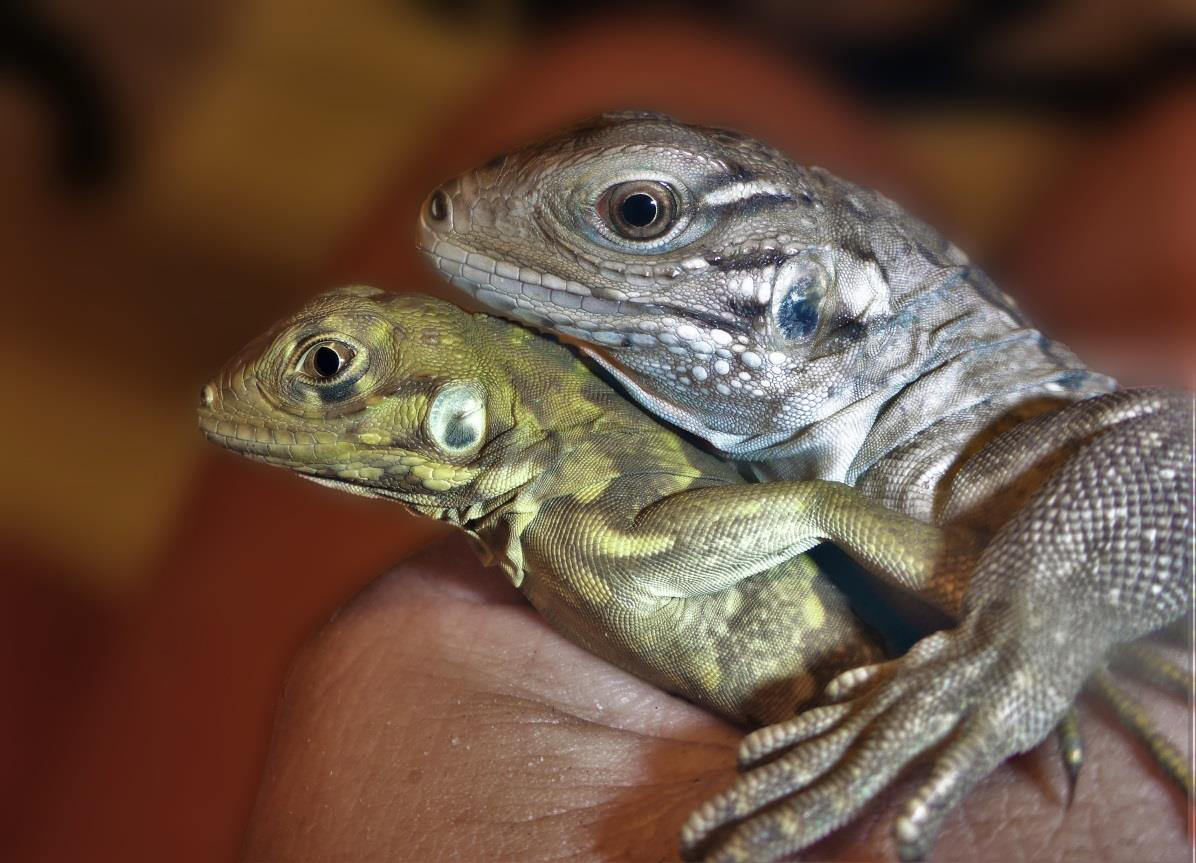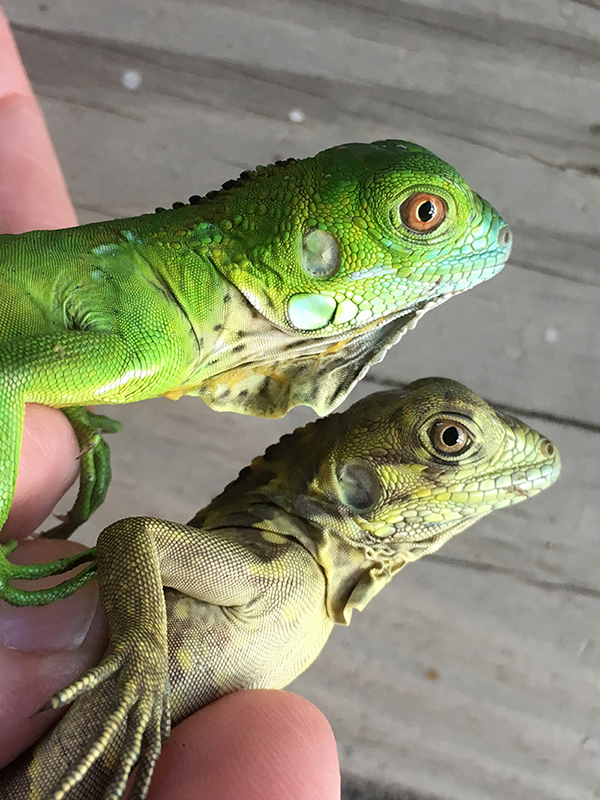Contact: Sasha Steinberg

STARKVILLE, Miss.—A team of Mississippi State students and faculty is among a group of researchers working in the Cayman Islands that may be the first to demonstrate cross-breeding between Green Iguanas and Rock Iguanas is possible.
Three unusual iguana hatchlings from Little Cayman recently were examined by the Cayman Islands Department of Environment. They appear to be hybrids, specifically the offspring of an invading Green Iguana female and a native Sister Isles Rock Iguana male.
To confirm the unexpected discovery, genetics work is now being conducted in the laboratory of Mark Welch, an associate professor and graduate coordinator in MSU’s Department of Biological Sciences.
Since 2008, the Welch laboratory has been investigating the genetic factors that might limit the viability of Caribbean iguanas to determine how population dynamics and size interact to influence the evolutionary potential of natural populations.
The strangely colored and patterned hatchlings exhibit intermediate characteristics for features that normally distinguish the two species. Cross-breeding is the only credible interpretation, according to Cayman Islands DOE officials.

Cross-breeding between Green Iguanas and Rock Iguanas has never been considered possible because the genetic difference between the two was thought to be too profound.
Little Cayman resident Mike Vallee caught the first of the hybrid hatchlings in the wild. Together, he and fellow resident Ed Houlcroft coordinate “Green Iguana B’Gonna,” a program of the National Trust for the Cayman Islands that works to preserve the islands’ history and biodiversity.
Another two hybrid hatchlings have been caught by MSU biological sciences doctoral student Jeanette B. “Jen” Moss, field assistant Tanja Laaser, and Welch. Though small in size and appearing to possess the long, striped tails of Green Iguana hatchlings, the newly-discovered hatchlings have different-shaped heads.
According to Cayman Islands DOE officials, the hatchlings’ bodies possess classic Rock Iguana patterns of dark chevrons and spots, underneath which there appears to be a yellow base color tinged with green.
Welch explained that it is too soon to determine whether the hybrids will be fertile or develop normally. Since their presence in the Cayman Islands poses a serious risk to native Rock Iguanas, the Cayman Islands DOE is investigating the possibility of transferring the hatchlings to the San Diego Zoo Institute for Conservation Research for rearing and fertility testing that will take place over the next several years.
Moss and other MSU researchers have joined Green Iguana B’Gonna volunteers in searching for additional hatchlings. None have been discovered yet, and it is unknown how many more may have hatched from the hybrid nest and dispersed into the surrounding vegetation.
“This is a major environmental issue, and this group of volunteers is trying to maintain biosecurity on the island,” Welch said. “They are doing amazing work.”
For additional information on the Welch Lab’s iguana research in the Cayman Islands, visit www.markwelch.net.
The Department of Biological Sciences is part of MSU’s College of Arts and Sciences. For more, visit www.cas.msstate.edu or www.biology.msstate.edu.
MSU is Mississippi’s leading university, available online at www.msstate.edu.